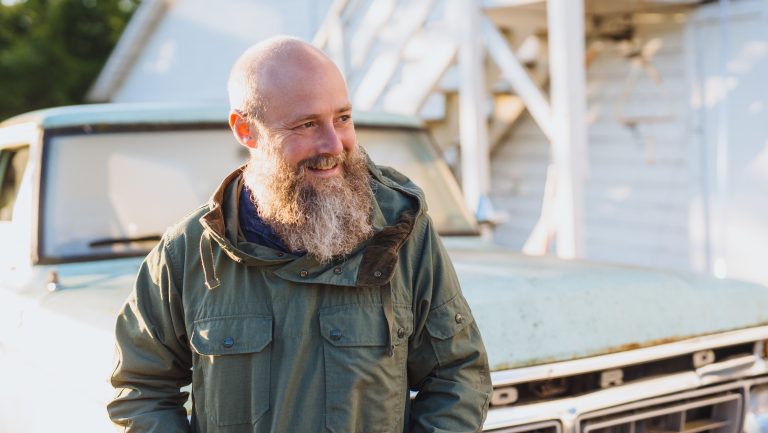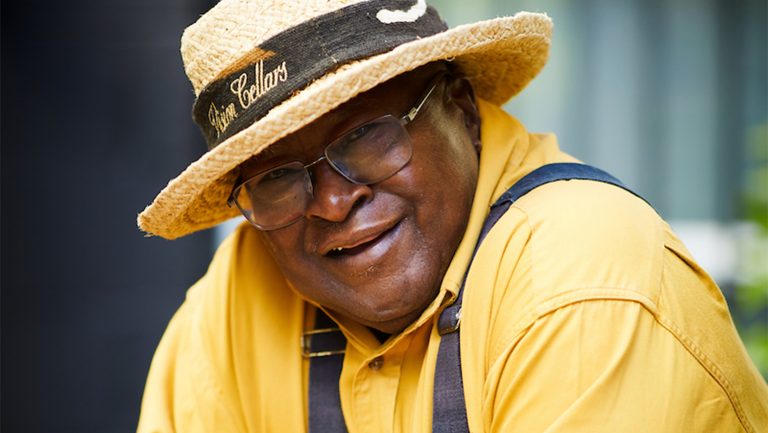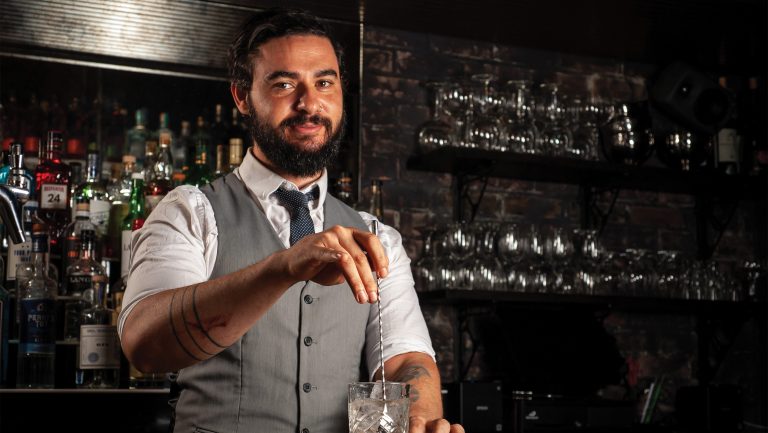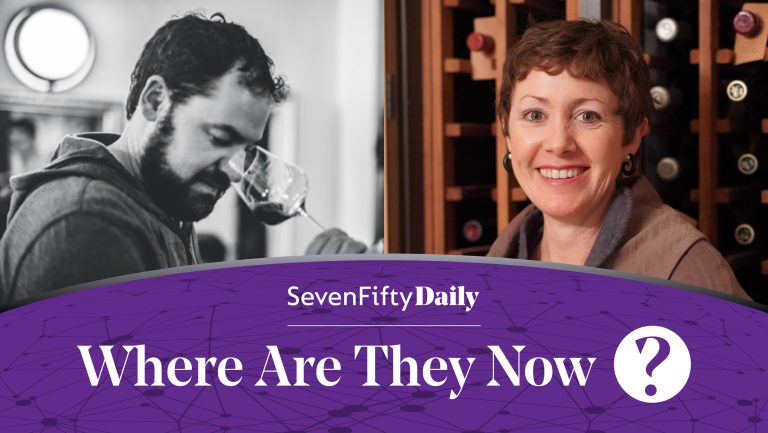For many years, the Platonic ideal of a vineyard consisted of monoclonal blocks of identical vines. Recently, that vision has changed as a new generation of winegrowers embraces the idea of genetic diversity within vineyards. Whether they’re resurrecting classic old-vine field blends, embracing interclonal planting, or grafting over mainstream varieties to rarer selections, some of today’s most exciting producers are promoting the idea that a more diverse vine population translates into healthier vineyards, more nuanced wines, and—arguably—a clearer portrayal of the vineyard’s underlying character.
One grower-winemaker, however, has taken the idea of vine variability to a whole new level. In Oregon’s Columbia River Gorge, Nate Ready has planted more than 100 grape varieties on his 30 acres at Hiyu Wine Farm, creating 12 complex field blends that are each in keeping with a historically inspired theme. He has rapidly achieved this remarkable diversity by going so far as to graft multiple varieties onto one plant, inspired by natural mutations that happen over time. The result is a vineyard that looks like it could have sprung from a fairytale and produces compelling, otherworldly wines. —Katherine Cole
SevenFifty Daily: What or who was your seminal influence?
Nate Ready: My origin point was in 2007. I was living and working at Ronco del Gnemiz in the Colli Orientali, and working at Edi Simčič in Slovenia on the weekends. The consulting agronomist at Ronco del Gnemiz, Andrea Pittana, who now has a winery in the Vipava Valley, in Slovenia, taught me that understanding farming, from the ground up, is the most important part of understanding wine and food. He took me to visit all these farms on the weekends, and I began to understand that this is about something far deeper. It was at that point that I was led to study methods for natural farming.

Don’t miss the latest drinks industry news and insights. Sign up for our award-winning newsletters and get insider intel, resources, and trends delivered to your inbox every week.
Your approach to viticulture is very outside the box, particularly in that you graft multiple varieties onto one plant. How do you see this work changing the industry?
The industry has already changed. For a long time, there was a mind-set that the infrastructure, investment, and time needed to plant a vineyard from the ground up precluded a lot of creativity. But once you have the base material—the rootstocks—in place, grafting allows you to be much more creative. It’s a tool that’s being used by a whole generation of winemakers who are really interested in biodiversity and diversity of flavors. People are captivated by varieties like Pineau d’Aunis from the Loire Valley, or by Ploussard from Jura, and they’re saying, ‘Hey, we can totally do this.’ And they’re asking vineyard owners to graft over their vines to a different variety. For me, being sort of obsessed with biodiversity and minimizing the impact of any one grape variety, grafting was just a realistic way to get the vineyard where I want it to be, in a time frame that is realistic.
What is your vision for Hiyu for the future?
It’s more of a 20-year vision—the dream of the landscape being less of a monoculture. In terms of the vineyard itself, what we’re trying to do is eventually get off the trellis and introduce a more natural growing system, where the vines are running down the hillsides, following contours, climbing rocks, and growing up a mix fruit trees (which would yield a second crop, for distillation or for eating), getting light from more directions. It makes more sense with the sunlight pattern in Oregon and would allow animals to move among the vines. We’re also trying to make better use of the land so we are able to raise animals, forage for vegetables, and potentially grow grain crops—using the land to its best.
What problems are you currently trying to address?
We’ve been looking for grapes that are really resistant to powdery mildew so we can further reduce spray inputs. We use an electrostatic sprayer and spray 85 percent less than a traditional organic or biodynamic vineyard. We’re trying to reduce inputs even further while also yielding a usable crop. We want to move to a system where we don’t feel like we have to touch the vineyard.
Who have been your mentors?
In terms of hospitality and sharing with people, Bobby Stuckey has had a huge impact on me. Maggie Harrison was my mentor in giving me the tools to be at ease in the vineyard and the cellar, to translate the beauty in the vineyard so that it’s expressed in the wine. I spent a week in Montana at a permaculture workshop led by Sepp Holzer. He is easily our biggest farming influence in this vision of creating systems that mimic nature.
What is your biggest challenge in running Hiyu Wine Farm and how do you surmount it?
The integration of elements. Each task, in and of itself, is manageable. But when you stack up animal husbandry with gardening with hospitality with vine growing with winemaking, integrating them all—prioritizing what has to happen each day—is hugely challenging. It’s not always clear, the path forward. Communication is difficult. We try to always work in groups and make space for meals and talking. Shared lunch is a huge thing for us.
Celebrating the wine, beer, and spirits professionals who are moving the drinks industry forward
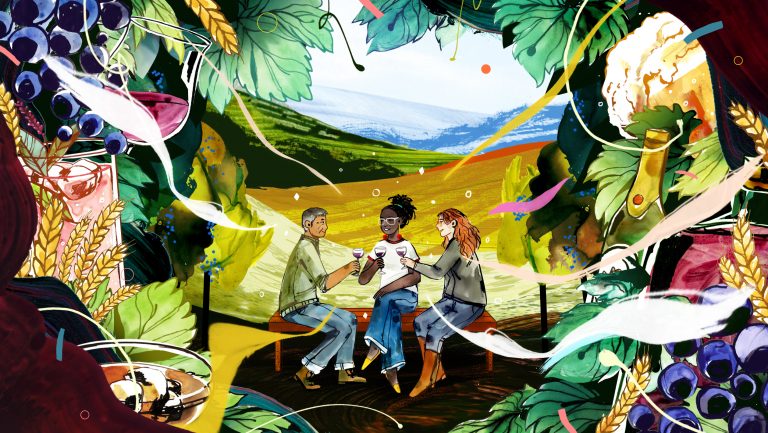
SevenFifty Daily’s 2018 Drinks Innovators
What’s your favorite thing to drink?
I drink Mark Angéli’s La Lune [Anjou Blanc] more than any other wine by far. Something about it resonates with me. It ties into where I want to go and where my dreams are. It has a certain kind of magic for me.
Are there any influencers you follow on social media?
René Redzepi, who was at The French Laundry when I was there. He seemed like a normal, regular guy in the kitchen. To watch what he has accomplished has been inspirational. It’s hugely important to what we are trying to do—seeking a way of growing that is ecological, ethical, and magically, like a different way of being with the land. We are also intensely interested in what that tastes like. What he is doing on the cuisine side very much opens one’s mind to what the outcome can be when it comes to flavor and tasting.
Read more about Nate Ready: How Nate Ready is Reenvisioning Genetic Diversity in the Vineyard.

Dispatch
Sign up for our award-winning newsletter
Don’t miss the latest drinks industry news and insights—delivered to your inbox every week.
Katherine Cole is the author of four books on wine, including Rosé All Day. She is also the executive producer and host of The Four Top, a James Beard Award–winning food-and-beverage podcast on NPR One. She is currently working on a fifth book, Sparkling Wine Anytime (Abrams), to be published in Fall 2020.

